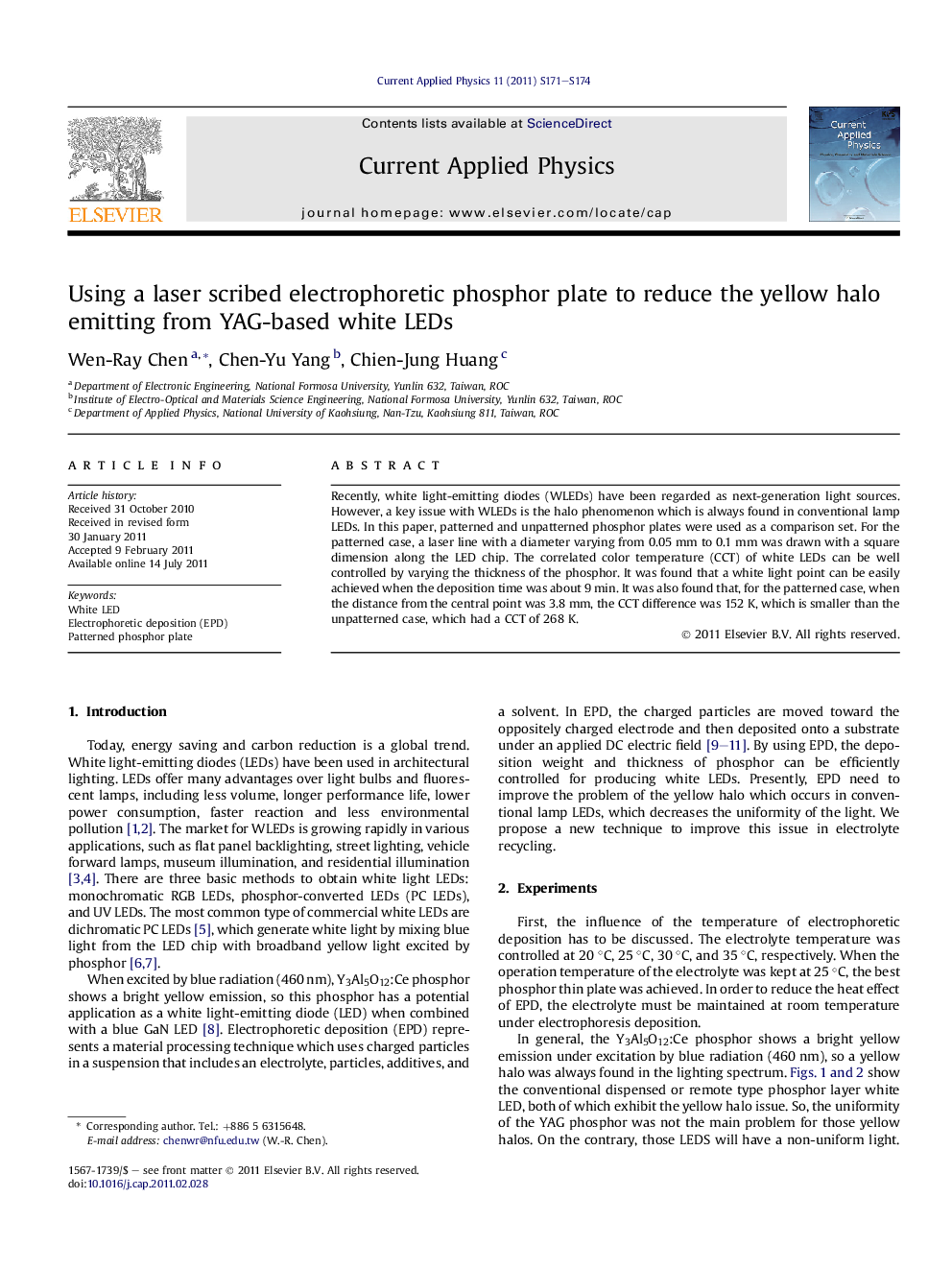| Article ID | Journal | Published Year | Pages | File Type |
|---|---|---|---|---|
| 1787730 | Current Applied Physics | 2011 | 4 Pages |
Abstract
Recently, white light-emitting diodes (WLEDs) have been regarded as next-generation light sources. However, a key issue with WLEDs is the halo phenomenon which is always found in conventional lamp LEDs. In this paper, patterned and unpatterned phosphor plates were used as a comparison set. For the patterned case, a laser line with a diameter varying from 0.05Â mm to 0.1Â mm was drawn with a square dimension along the LED chip. The correlated color temperature (CCT) of white LEDs can be well controlled by varying the thickness of the phosphor. It was found that a white light point can be easily achieved when the deposition time was about 9Â min. It was also found that, for the patterned case, when the distance from the central point was 3.8Â mm, the CCT difference was 152Â K, which is smaller than the unpatterned case, which had a CCT of 268Â K.
Related Topics
Physical Sciences and Engineering
Physics and Astronomy
Condensed Matter Physics
Authors
Wen-Ray Chen, Chen-Yu Yang, Chien-Jung Huang,
